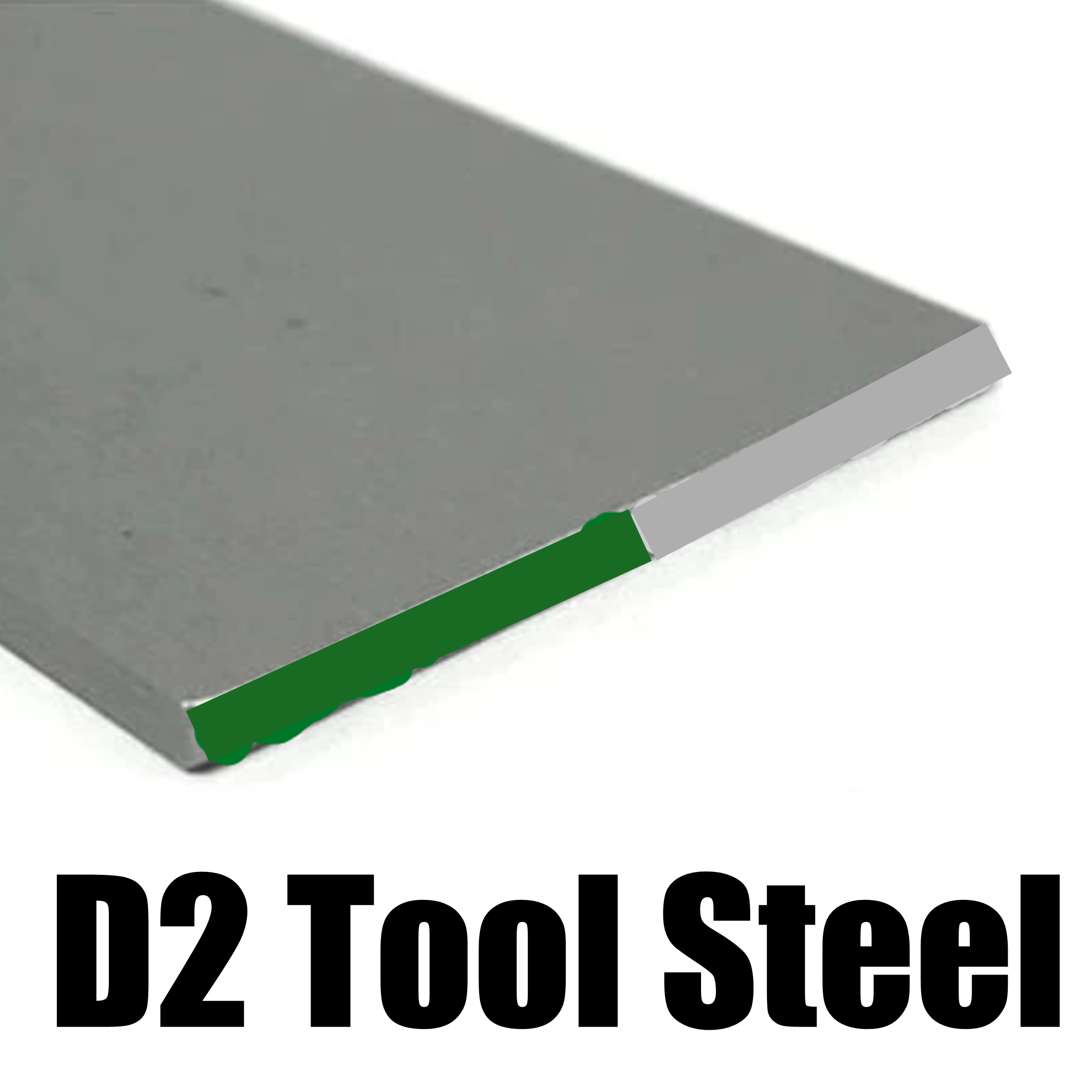D2 - Tool Steel Flat Bars
D2 is a high-carbon, high-chromium tool steel known for its exceptional wear resistance and ability to hold a fine edge for extended periods. Supplied in its annealed state with a textured hot-rolled surface, it is relatively easy to cut, drill, and machine before hardening. Thickness may vary slightly between batches.
Unlike stainless steels, D2 is considered a semi-stainless steel due to its high chromium content (around 12%). While not fully stainless, it does offer moderate corrosion resistance compared to simple carbon steels, making it a popular choice for hard-use knives, dies, and cutting tools. Its high carbide volume gives it excellent wear resistance and edge retention, though this also makes it more challenging to sharpen compared to simpler alloys.
Made by CSCJ
Composition
- Carbon – 1.50%
- Chromium – 12.00%
- Vanadium – 0.90%
- Molybdenum – 0.80%
- Manganese – 0.30%
- Silicon – 0.30%
- Iron – Balance
Performance Characteristics
-
Toughness – 5/10
D2 has good toughness for a high-carbon tool steel, though it is not as tough as lower-alloy steels like 5160 or 80CrV2. Care should be taken in applications where heavy impact is expected, as it can be prone to chipping if pushed beyond its limits.
-
Edge Retention – 8/10
Thanks to its high carbon and chromium carbide content, D2 offers excellent wear resistance and edge retention, making it one of the most popular choices for knives where long-lasting sharpness is a priority.
-
Corrosion Resistance – 6/10
With 12% chromium, D2 offers more corrosion resistance than simple carbon steels like 1095 or O1, but it is not stainless. Proper care, including oiling and keeping blades dry, is recommended to prevent spotting or rust.
Recommended Heat Treatment
- Coat blade in an anti-scale compound or seal in stainless steel tool wrap
-
Austenitise – Heat to 1020–1040 °C (1870–1905 °F) and hold for 15–30 minutes
-
Quench – Oil quench or between aluminum plates with forced air
-
Cryogenic Treatment (optional but recommended) – For maximum hardness and reduced retained austenite, immerse in liquid nitrogen or dry ice slurry for at least 1 hour before tempering
-
Temper – 2 hours, twice, at 150–540 °C (300–1000 °F) depending on desired hardness and application
Approximate As-Quenched Hardness Before Tempering
- 1040 °C with cryogenic treatment – 62–63 HRC
- 1040 °C without cryo – 60–61 HRC
Recommended Working Hardness
58–62 HRC, depending on the intended balance of edge retention and toughness.
















